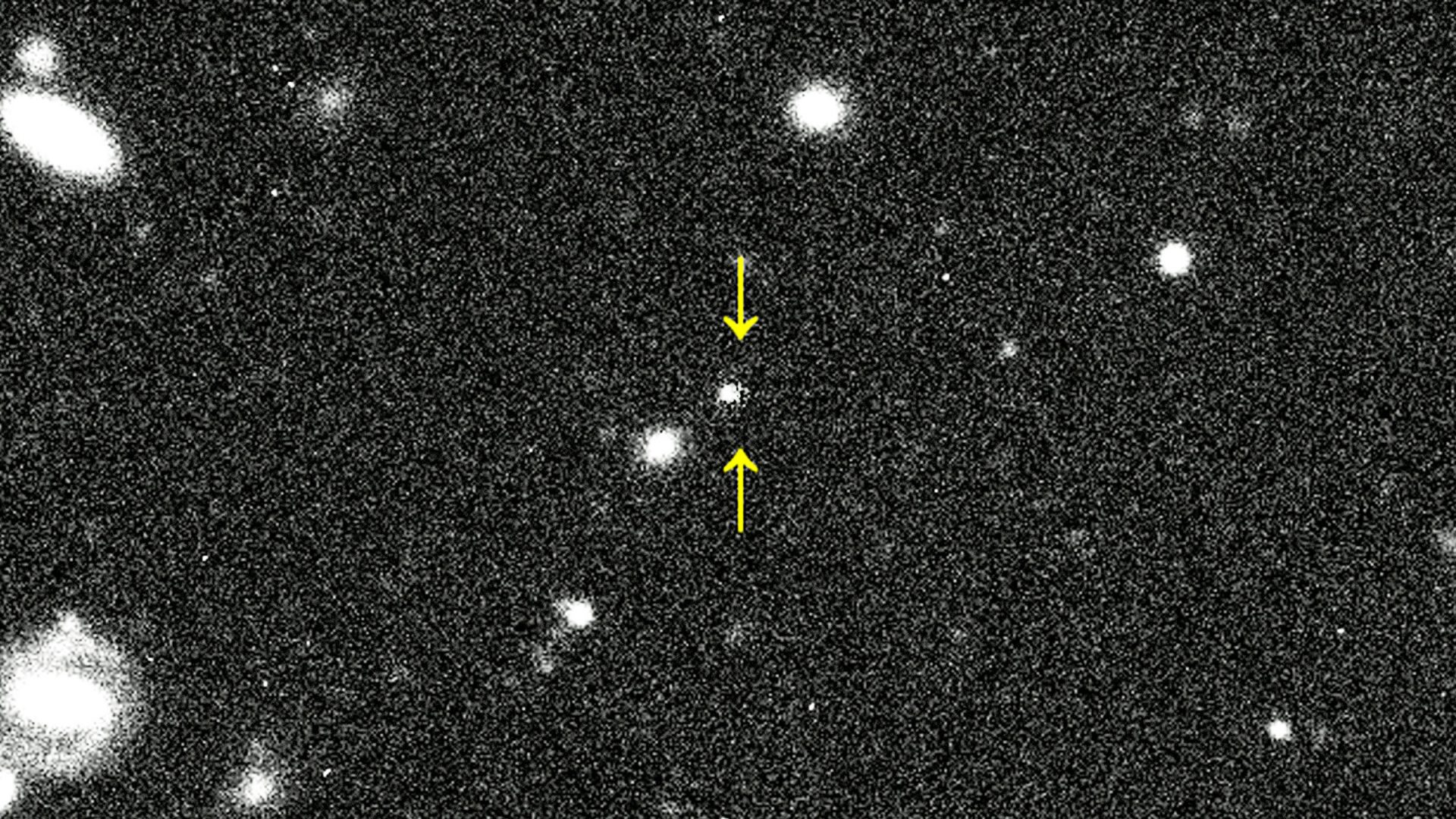2017 OF201 is the largest object to have been found in our solar system for more than a decade
It’s not often that a new world is discovered in our own cosmic backyard. It depends on what you’d call a “world”, but the ball of rock and ice unglamorously designated “2017 OF201” is, at around 700 km across, a third the width of Pluto and big enough to officially qualify for the status of a “dwarf planet”.
2017 OF201 joins just nine other such known bodies in our solar system, including the largest object in the asteroid belt, Ceres, and the world formerly known as the ninth regular planet, Pluto itself. The reason it took so long to spot 2017 OF201 is that it is so very far away from Earth: out beyond the orbit of Pluto, where the reflected sunlight from such a small world is extremely faint.
What’s more, its orbit around the sun is peculiar: a drawn-out ellipse with the sun close to one end, meaning that during the 25,000 years it takes to complete a single cycle (it was last in its current location at the height of the last ice age) 2017 OF201 wanders right out to about 244 billion km away: a little short of 1% of the distance to the next-nearest star. The object is only visible right now because it happens to be close to its point of nearest approach to the sun. For almost all of its course it is much too distant to see with today’s telescopes.
All the same, it seems that this new dwarf planet could in principle have been spotted years ago. It was seen by a team of astronomers in Princeton in images taken by an instrument called the Dark Energy Camera between 2014 and 2018 – a device built to look instead at distant galaxies, but which is sensitive enough to spot very faint objects much closer to Earth (and which has already revealed about 800 others beyond Neptune). The telltale sign was that the faint spot of light moved against the background of stars, from which motion the team could calculate its orbit. They then checked old, publicly available images collected in 2011 by a telescope in Hawaii and confirmed that it was visible in them too. They hope to use the Hubble or James Webb Space Telescopes to take a closer look.
The existence of 2017 OF201 is, however, no great surprise. It has long been known that beyond the orbit of Neptune there is a disc of asteroid-like bodies of this sort: lumps of icy rock that comprise the so-called Kuiper Belt, basically debris that never got moulded into large planets. Pluto is itself now classed as a Kuiper Belt Object, as is its moon Charon. Aside from those, the first dwarf planet in this belt, called Albion, was discovered only in 1992. In 2005 a “trans-Neptunian” dwarf planet named Eris was spotted that is even more massive than Pluto.
2017 OF201 is the largest object to have been found in our solar system for more than a decade. It might seem remarkably good luck that we happen to be observing in the tiny window of time when the object can be seen at all – but the better way to think about that is to infer that there must be lots of other objects like this that we can’t currently see.
In other words there’s a lot of pretty big stuff out there, which has prompted heated debate among astronomers (the arguments still rage) about what deserves to be considered a true planet. No one is likely to argue that case for 2017 OF201 (which will surely be awarded a mythologically inspired name soon), and its highly eccentric orbit (in both the colloquial and the technical sense) renders it something of an oddity. But it looks set to spark a different debate: about whether there really is another true planet out in the distant reaches of the solar system.
Often dubbed Planet X, such a hypothetical object has been proposed because some of the orbits of other Kuiper Belt Objects seem to be influenced by the presence of some massive body, too distant to see directly, that shepherds them with its gravitational field. But at first glance, the orbit of 2017 OF201 doesn’t seem to fit with that idea: the Princeton team says that the pull of a hypothetical Planet X would quite quickly cast the new dwarf planet out of the solar system. Advocates of Planet X say, though, that it’s far too early to draw any conclusions about that.
